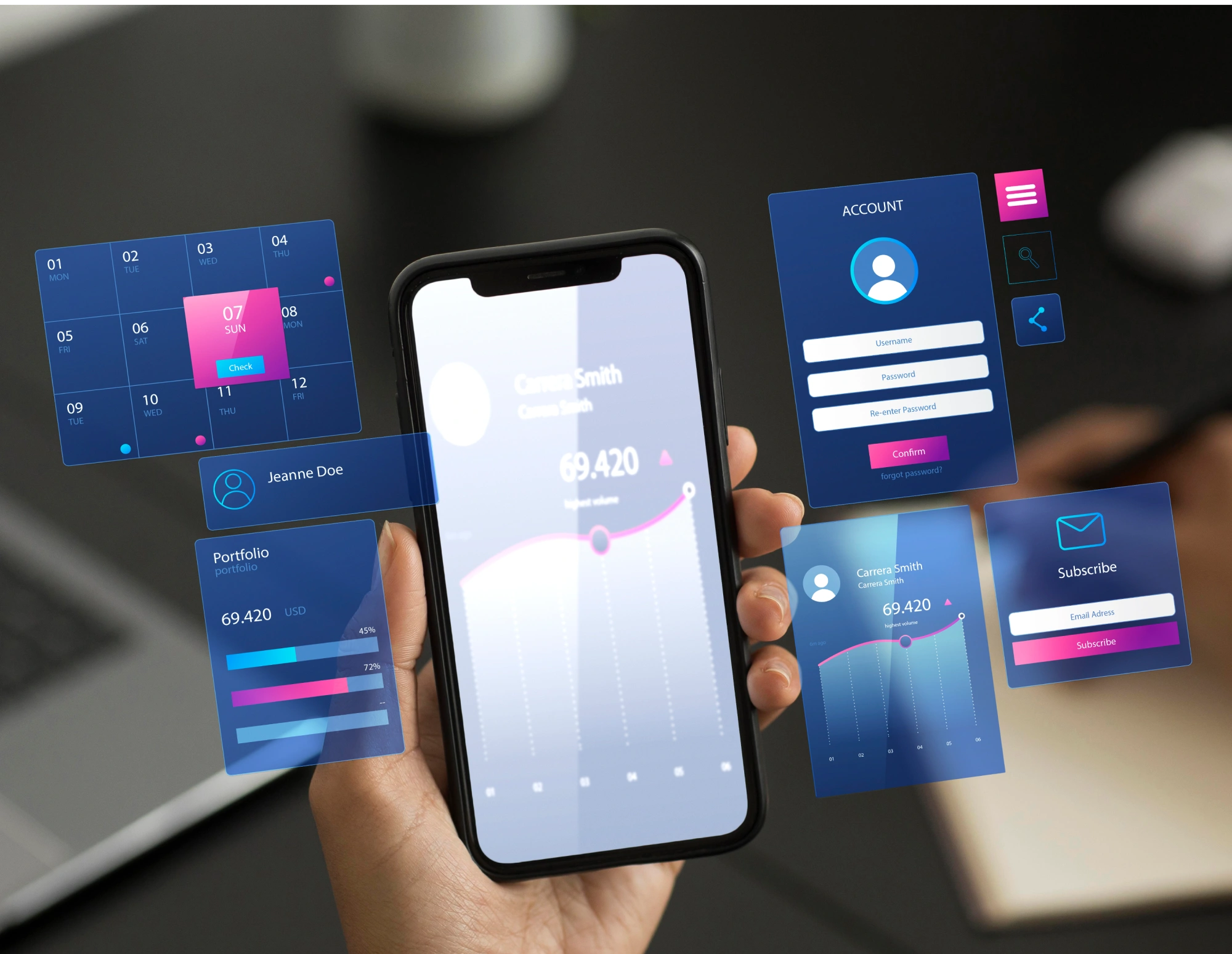The Evolution of Web Development: Single-Page Applications
Single-Page Applications (SPAs) have revolutionized web development, providing a more dynamic and efficient approach to building modern web applications. Unlike traditional multi-page applications (MPAs), SPAs load a single HTML page and dynamically update content based on user interactions, eliminating the need for full-page reloads. This innovative design delivers seamless user experiences, faster load times, and enhanced performance—key attributes driving the widespread adoption of SPAs in 2025.
Table of Contents
Core Characteristics of SPAs
Single Page Applications (SPAs) dynamically load content without full page reloads, ensuring a fast, seamless browsing experience. They use JavaScript frameworks for client-side rendering, enabling responsive user interfaces and smooth navigation. SPAs rely on asynchronous communication like AJAX for real-time data updates and implement offline capabilities with service workers. Their modular design and reusable components make them scalable and easy to maintain for complex applications.
Dynamic Content Loading
SPAs rely on advanced JavaScript frameworks to dynamically render content. Technologies like React, Angular, and Vue.js enable asynchronous data fetching, ensuring that only the necessary elements are updated in real-time without interrupting user workflows.
Lightweight Server Interaction
By leveraging AJAX (Asynchronous JavaScript and XML) and RESTful APIs, SPAs minimize server-side calls, reducing bandwidth usage and accelerating performance. This optimized interaction is especially valuable for applications with high traffic demands.
Client-Side Rendering (CSR)
SPAs handle the majority of rendering processes on the client side. By offloading computational tasks to the browser, SPAs reduce server loads, enabling better scalability for enterprise-grade applications.

Why Choose SPAs? Key Advantages and Benefits
Enhanced User Experience
SPAs eliminate disruptive page reloads, providing a fluid and engaging interface. This responsiveness is particularly important for:
Interactive Dashboards
SPAs allow users to interact with complex data visualizations without delays.
Gaming Platforms
Real-time rendering ensures immersive gaming experiences.
Social Media Applications
Instant updates maintain user engagement.
Superior Performance Metrics
Modern SPAs achieve unparalleled speed and efficiency by:
Reducing Initial Load Time
Bundling assets and caching static resources accelerates the first page load, improving time-to-interaction (TTI).
Minimizing Latency
With fewer HTTP requests and smaller payloads, SPAs excel in low-bandwidth environments, ensuring uninterrupted access.
Real-Time Capabilities
SPAs are ideal for applications requiring real-time updates, such as collaborative tools (e.g., Google Docs) or live streaming platforms.
Development Efficiency
Streamlined Codebase
SPAs utilize reusable components and centralized state management tools (like Redux or Vuex), simplifying maintenance and scalability.
Versatile Framework Ecosystem
The SPA ecosystem supports various frameworks tailored to specific use cases. For instance:
| Framework | Ideal Use Case | Key Feature |
|---|---|---|
| React | Dynamic UI components | Virtual DOM for optimal rendering |
| Angular | Enterprise-grade applications | Built-in dependency injection |
| Vue.js | Lightweight, beginner-friendly apps | Two-way data binding |
| Svelte | High-performance interactive widgets | Compile-time optimizations |
Technical Challenges and Mitigation Strategies
While SPAs offer numerous benefits, they are not without challenges. Addressing these issues requires technical expertise and strategic implementation.
SEO Optimization for SPAs
Problem: Limited Search Engine Crawling
Single-page applications often struggle with poor SEO due to client-side rendering. Search engine bots may fail to index dynamic content effectively.
Solution: Server-Side Rendering (SSR)
Implementing SSR through tools like Next.js or Nuxt.js allows search engines to access pre-rendered HTML content, significantly improving visibility.
Accessibility Concerns
Problem: Inconsistent Screen Reader Support
SPAs may inadvertently disrupt navigation for assistive technologies.
Solution: Semantic HTML and ARIA
Adopting semantic HTML elements and Accessible Rich Internet Applications (ARIA) attributes ensures compatibility with screen readers.
Security Risks
Problem: Increased Attack Surface
The extensive reliance on JavaScript opens SPAs to potential vulnerabilities such as cross-site scripting (XSS) and data leaks.
Solution: Adherence to Security Best Practices
- Enable Content Security Policies (CSPs).
- Sanitize all user inputs.
- Use HTTPS to encrypt data transmissions.
Comparing SPAs and MPAs: A Technical Analysis
| Aspect | SPA | MPA |
|---|---|---|
| Loading Speed | Faster after initial load | Slower due to multiple page reloads |
| Development Cost | Lower with reusable components | Higher with redundant code |
| SEO Suitability | Challenging without SSR | Better for static content |
| Offline Support | Possible via service workers | Limited |
Emerging Trends in SPA Development
Progressive Web Applications (PWAs)
SPAs are increasingly being integrated into Progressive Web Applications (PWAs) to combine the best features of web and native applications. This integration leverages offline capabilities, push notifications, and smooth user experiences to deliver app-like functionality directly in the browser. Key technologies like Service Workers enable caching and background synchronization, while Web App Manifests provide metadata that ensures the application behaves like a native app on devices, including support for installation and full-screen modes.
Micro Frontends
The adoption of micro-frontend architectures is transforming how SPAs are built, allowing developers to break down large applications into smaller, independently deployable units. This modular approach facilitates easier maintenance, parallel development, and scalability, as each team can work on a specific feature without interfering with others. Tools like Module Federation in Webpack streamline the process by enabling dynamic module sharing across different parts of the application, promoting reusability and reducing redundancy.
Enhanced State Management
Modern SPAs rely on advanced state management libraries such as MobX and Zustand to handle complex data flows and ensure synchronization across components. These libraries offer lightweight and reactive solutions to manage application state, avoiding the overhead of traditional state management systems. By ensuring consistent data updates and minimizing boilerplate code, these tools enhance performance and developer productivity, making SPAs more robust and user-friendly.
WebAssembly (Wasm) Integration
WebAssembly is revolutionizing SPA performance by providing near-native execution speeds for computationally demanding tasks. This low-level bytecode format enables applications to run complex algorithms, data processing, or graphics rendering directly in the browser, overcoming JavaScript’s limitations. With Wasm, SPAs can seamlessly integrate high-performance modules written in languages like C++, Rust, or Go, opening new possibilities for immersive web experiences without compromising speed or efficiency.
Future Outlook and Final Thoughts
Single-Page Applications are a cornerstone of modern web development, providing unmatched speed, flexibility, and interactivity. By embracing cutting-edge technologies and addressing inherent challenges, developers can unlock the full potential of SPAs in creating user-centric, scalable, and secure digital experiences. Whether you’re building a real-time analytics tool or an immersive gaming platform, SPAs continue to redefine what’s possible on the web.
Discover Your Ideas With Us
Transform your business with our Web Development solutions. Achieve growth, innovation, and success. Collaborate with our skilled development team today to revolutionize your digital presence!


